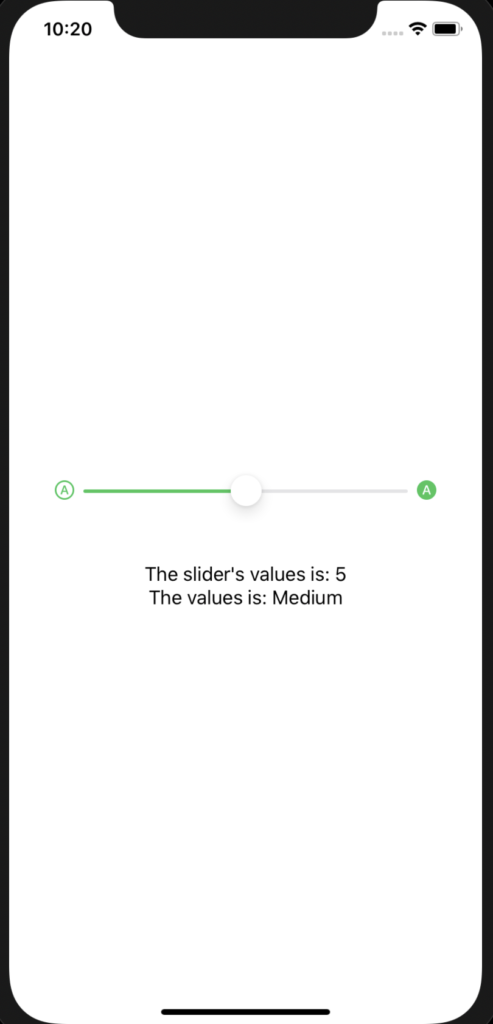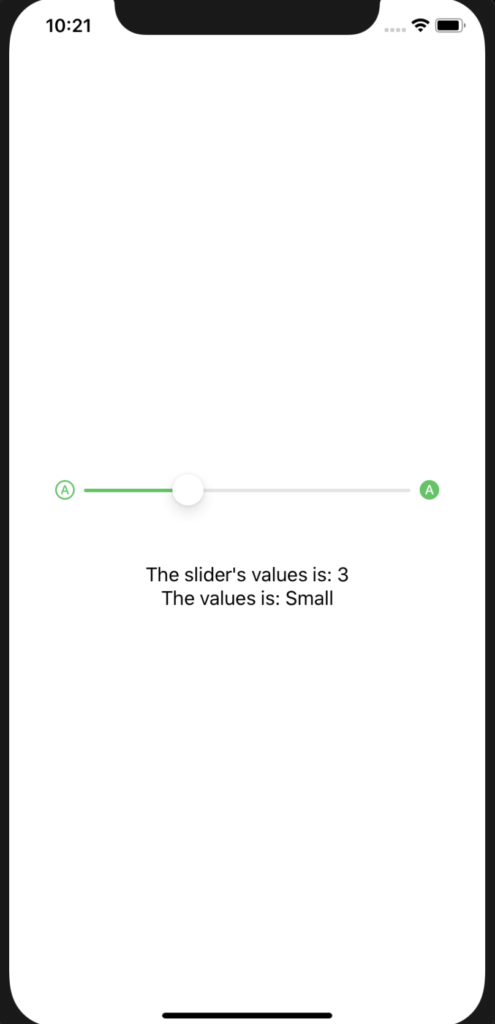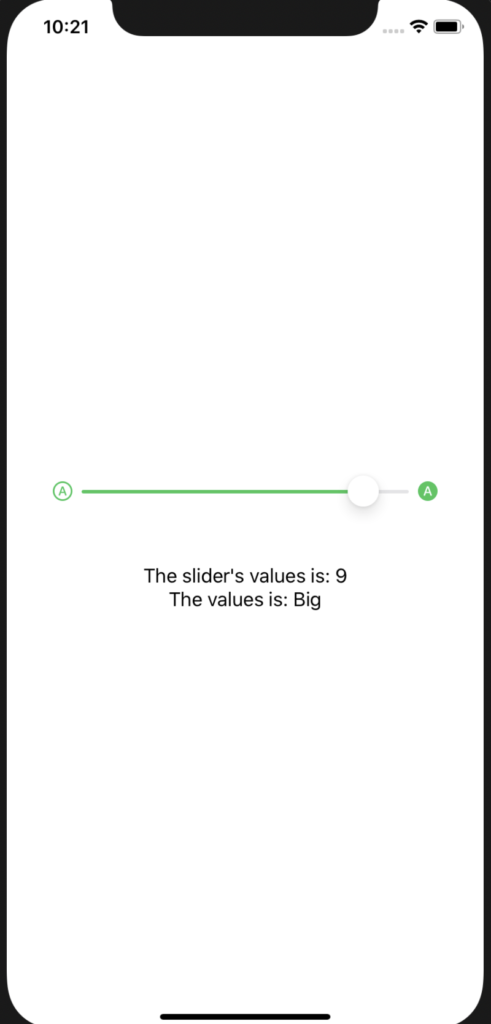In this post, we will see how to create and manage a Slider in Swift, with a min value equal to 0 and
a max value equal to 10 (with a step of 1).
Moreover, every time Slider will change value, the app will run a method.
We open Xcode, we create a “Single View App” application and then we add this code in the ContentView file:
[CONTENTVIEW.SWIFT]
import SwiftUI
struct ContentView: View {
// Definition of variables used to manage the Slider
@State var lightValue = 5.0
var minLight = 0.0
var maxLight = 10.0
@State var message = "Medium"
// This method is called every time the Slider
// changes value
func ShowValue() {
switch self.lightValue
{
case 1...3:
self.message="Small"
case 4...7:
self.message="Medium"
default:
self.message="Big"
}
}
var body: some View {
VStack{
Spacer()
HStack {
// Load a SF Symbol called a.circle
Image(systemName: "a.circle")
.foregroundColor(.green)
// Definition of Slider
Slider(
// Manage of Slider's value
value: Binding(
get: {
self.lightValue
},
set: {(newValue) in
self.lightValue = newValue
// Every time the Slider changes the value,
// the app will call the method ShowValue
self.ShowValue()
}
),
// Definition of Slider's min and max values
in: minLight...maxLight, step: 1.0
).accentColor(.green)
// Load a SF Symbol called a.circle.fill
Image(systemName: "a.circle.fill")
.foregroundColor(.green)
}.padding(40)
Text("The slider's values is: \(Int(self.lightValue))")
Text("The values is: \(self.message)")
Spacer()
}
}
}
struct ContentView_Previews: PreviewProvider {
static var previews: some View {
ContentView()
}
}
If we run the application, this will be the result:


